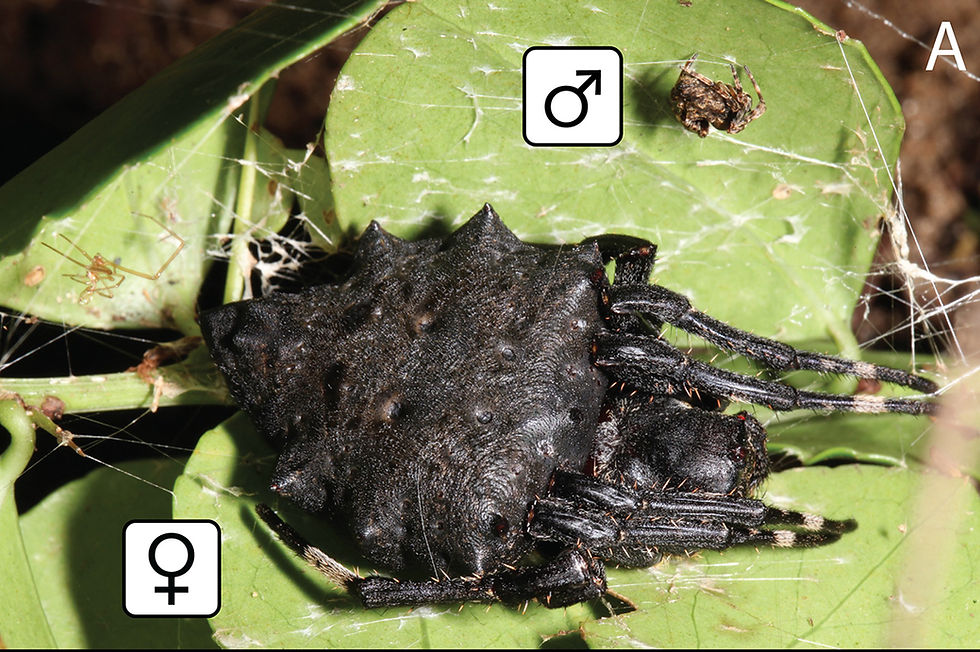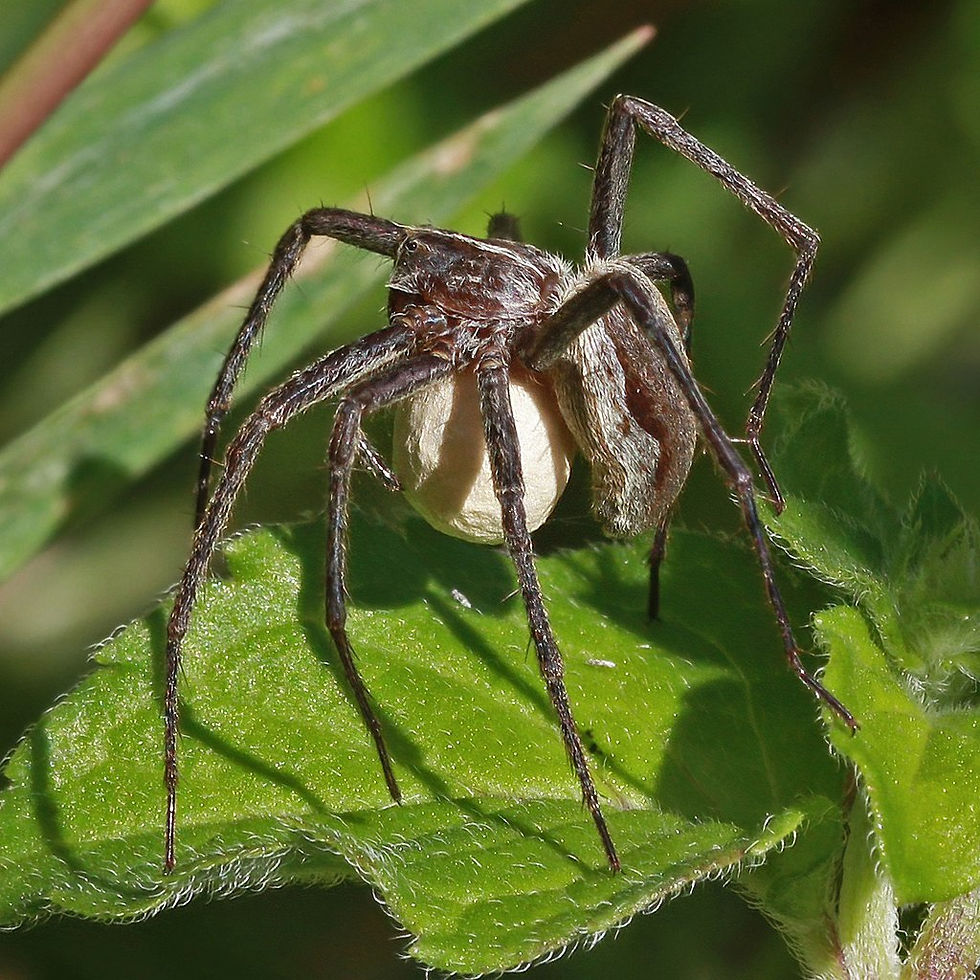Spider kleptoparasites on orb web resource patches
- Matjaž Gregorič
- Aug 30, 2024
- 2 min read
The ideal free distribution (IFD) theory predicts that individuals are free to move among habitat patches and distribute among them ‘ideally’, in order to maximize individual fitness. Size and quality of habitat patches then should directly impact the number of individuals occupying them, and connectivity of habitat patches likely plays a role if dispersal is limited. However, habitat patches can be distributed so that movement no longer can be considered free, for example when patches are isolated. Challenges stemming from patch delimitation and detection rate of occupants further complicate efforts attempting to resolve such patterns.
Here we utilize as habitat patches the orb webs of four different populations belonging to three golden orb weaver spider species, Nephila pilipes, Nephilingis livida, and Trichonephila clavipes, and the obligate spider kleptoparasites (Argyrodinae, Theridiidae) that are associated with their webs. This interaction is a simple, readily quantifiable system to test the predictions of the IFD in nature. We examine how the ideal free distribution predicts the abundance of kleptoparasites under different patterns of patch size and distribution.
We found that larger host webs, i.e., habitat patches that contain more resources, are occupied by a higher number of kleptoparasitic spiders, regardless of their degree of isolation. Although the free movement prediction is often violated in natural systems, we find no evidence for habitat patch connectivity affecting the abundance of kleptoparasites, indicating that their dispersal ability facilitates the location and colonization of habitat patches regardless of their isolation. Therefore, this kleptoparasite-host system seems to comply with most IFD predictions: (i) each habitat patch possesses an individual quality; (ii) in absence of competition, the fitness of individuals is expected to increase with increased patch quality; (iii) individuals are able to detect patch quality; (iv) individuals are free to move among patches; and (v) individuals of different species and sizes (instars) seem similarly competitive as they routinely cohabit in webs.

Webs of golden orb weavers are resource patches of argyrodine kleptoparasitic spiders. (a) Adult female Trichonephila inaurata in its large, golden web; (b) a web of an adult Trichonephila komaci female (♀) with an adult male (♂) and seven argyrodine kleptoparasitic spiders (circles) residing in it.



Comments